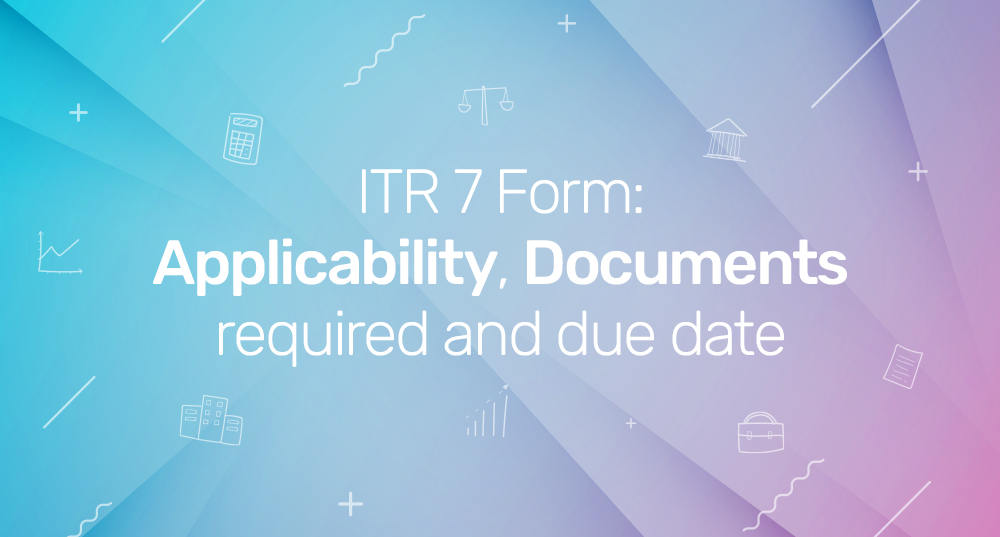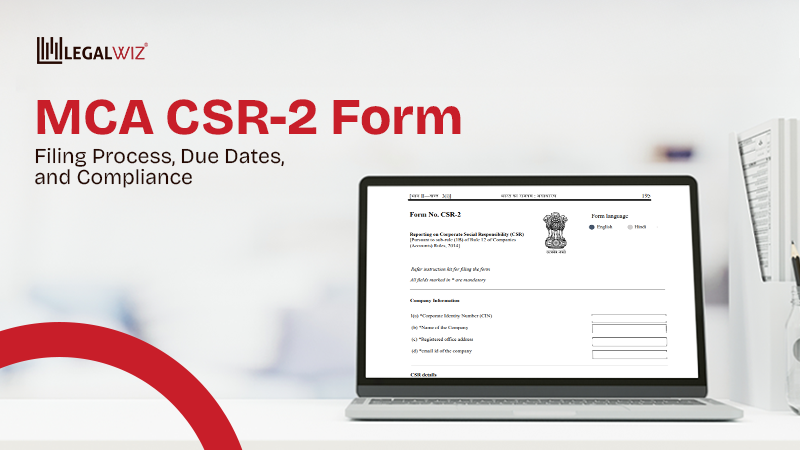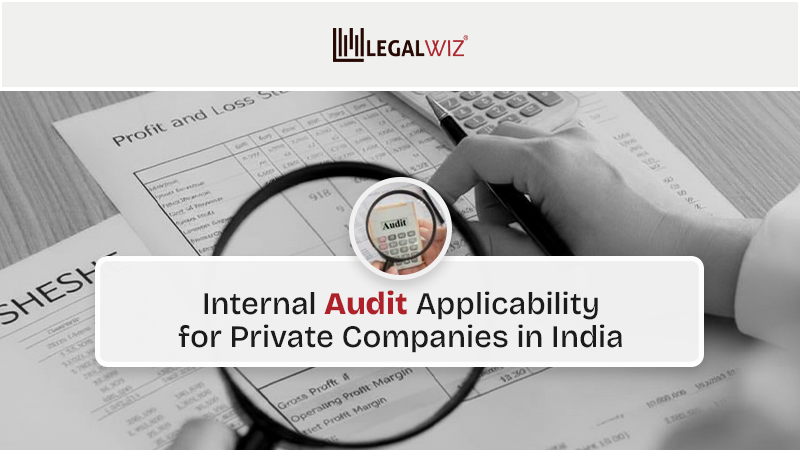ITR 7 Form: Applicability and Due Dates
Filing the income tax returns on time is a duty imposed on every person and body earning income from various sources in India. Since there are so many sources through which people generate income and wealth in the country, it is impossible to conduct ITR filing for all in one specific format. Hence, the Income Tax department of India divides the ITR forms into seven different forms. This article focuses on the seventh and the last income tax return form “ITR 7”. Through this article, you can figure out what is ITR 7, applicability, format and due date.
What is ITR 7?
ITR 7 form is a format prescribed by the income tax department for persons and companies earning their income through properties held for charitable and religious purposes. The ITR 7 form allows such persons and companies to furnish the statement of their income and expenses to the income tax department through two different modes.
What is ITR 7 form eligibility criteria?
Now that we know what ITR 7 form means, let’s understand who it is applicable to. The itr 7 form is applicable to persons and companies that need to file their IT returns under any of the following sections of Income Tax Act:
ITR for entities earning from charity
As per this provision of the income tax act, any individual or person (natural or legal) who earns whole or part of their income through properties help for charitable or religious purposes need to furnish their annual income tax returns through ITR 7 form.
Furnishing returns for political parties by ITR 7
All political parties whose incomes exceed the maximum tax exemption limit need to furnish their returns through ITR 7 form. Additionally, the filing of ITR 7 can be done by the secretary or chief executive officer of the political party.
Returns for research institutes
Any of the following types of institutions, that are claiming benefits under section 10, but the income is more than the maximum tax exempt limit:
- New Agencies;
- Scientific Research Institutions;
- Entities under Section 10(23A), i.e., working towards public interest activities;
- Entities under section 10(23B), i.e., earning all income from khadi and/or village development; and
- Lastly, university, institutions, other educational and medical institutions, hospitals.
Educational institutions ITR filing
Applicable to universities, colleges, and other institutions who conduct research for their own business, which are typically exempted from submitting their returns, however, have income exceeding the maximum exemption limit.
Business Trusts
This provision applies to business trusts, with the annual income more than the maximum tax exemption limit.
Investment Funds
When income is earned through the alternative investment funds, as provided under section 115UB of the act, you need to furnish returns using the form.
Also Read: How to file ITR online?
What is the ITR 7 form structure?
The form is divided into the following parts:
Part A
This part of the form ITR 7 includes general information about the assessee. Hence, This general information includes:
- firstly, name and other details on assessee;
- secondly, details of project or institution;
- thirdly, the section under which the return is filed; and
- lastly, section under which you claim tax exemption; and registration details.
Part B
Here, the assessee can compute the total income and the tax applicable and chargeable by providing the details of income, expenses and applicable deductions under section 10. Besides, this will give you the total tax liability.
Schedules to ITR 7 form
| Schedule Name | Details to be furnished |
| I | Details of amounts accumulated / set apart within the meaning of section 11(2) or in terms of third proviso to section 10(23C)/10(21)/10(21) read with section 35(1) |
| IA | Accumulated income taxed in earlier assessment years as per section 11(3) |
| D | deemed application of income under clause (2) of Explanation 1 to sub-section (1) of section 11 |
| DA | Details of accumulated income taxed in earlier assessment years as per section 11 (1B) |
| J | Statement showing the funds and investments as on the last day of the previous year [to be filled by assesses claiming exemption u/s 11 and 12 or u/s 10(23C)(iv) or 10(23C)(v) or 10(23C)(vi) or 10(23C)(via) )] |
| Part A-BS | Consolidated balance sheet as on 31st day of March 2023 |
| R | Reconciliation of Corpus of Schedule J and Balance sheet |
| LA | Political Party |
| ET | Electoral Trust |
| VT | Voluntary Contributions [to be mandatorily filled in by all persons filing ITR-7] |
| AI | Aggregate of income derived during the previous year excluding Voluntary contributions [to be filled by assesses claiming exemption u/s 11 and 12 or u/s 10(23C)(iv) or 10(23C)(v) or 10(23C)(vi) or 10(23C)(via)] |
| A | Amount applied to stated objects of the trust/institution during the previous year from all sources referred to in C1 to C7 of this table- [to be filled by assessee claiming exemption u/s 11 and 12 or u/s 10(23C)(iv) or 10(23C)(v) or 10(23C)(vi) or 10(23C)(via)] |
| IE-1 to 4 | Income and Expenditure statement |
| HP | Details of Income from House Property |
| CG | Capital Gains |
| VDA | Income from transfer of virtual digital assets u/s 115BBH |
| OS | Income from other sources |
| OA | General |
| BP | Income from Business or Profession |
| CYLA | Details of Income after set-off of current years losses |
| PTI | Pass Through Income details from business trust or investment fund as per section 115UA, 115UB |
| SI | Income chargeable to tax at special rates |
| 115TD | Accreted income under section 115TD |
| 115BBI | Specified income of certain institutions under section 115BBI |
| FSI | Details of Income from outside India and tax relief (available only in case of resident) |
| TR | Summary of tax relief claimed for taxes paid outside India |
| FA | Details of Foreign Assets and Income from any source outside India |
| SH | Shareholding of unlisted company |
How to file ITR 7?
You can submit the returns in this form by:
- Firstly, furnishing all information electronically on the tax e-filing portal; or
- By transmitting data in the electronic form and then verification through ITR V.
For both these modes of filing ITR 7, it is recommended that you furnish the information in the following manner:
- Firstly, fill out the details in Part A;
- Part B of ITR 7 comes next;
- Then, proceed to filling out the schedules applicable/mandatory for you; and
- Finally, complete the verification.
Tax Audit Report information
Section 44AB of the act provides for a mandatory audit report requirement to companies and entities having turnover more than one crore need to get a tax audit report from a certified CA. Further, while furnishing returns through the form, such assessee need to provide the information of such audit report, along with the date of report in the form.
What is the due date for filing ITR 7?
The due date of filing ITR 7 for tax assessee depends on whether tax audit is applicable to them or not. Thus, Let’s see the dates:
- For non-audit assessee the due date for filing ITR 7 is 31st July; and
- For assessee’s to whom audit is applicable the ITR 7 form deadline is 31st October.
Conclusion
As we know, there are different ITR forms applicable to different persons. For example, ITR 1 is used to file returns for salaried employees, and ITR 5 for companies. The form ITR 7 is usually a bit more complex, considering the fact that it is applicable to trusts and non profit organisations. Hence, it is advisable to get expert assistance before you furnish your details. Now that you know what is ITR 7, connect with LegalWiz.in and file your ITR today!
Frequently Asked Questions
If I am not an Indian Resident, should I mention it in the ITR 7?
Yes, you need to mention whether you are an Indian resident or not while furnishing information in ITR 7.
Do persons filing ITR 7 need to give information of balance sheet?
Yes, it is mandatory to provide the information and details of the balance sheet of the financial year you are furnishing your returns for.

Diksha Shastri
As a writer, Diksha aims to make complex legal subjects easier to comprehend for all. As a Lawyer, she assists startups with their legal and IPR drafting requirements. To understand and further spread awareness about the startup ecosystem is her motto.
2 Comments
Leave A Comment








Excellent
Thank you for the comment!